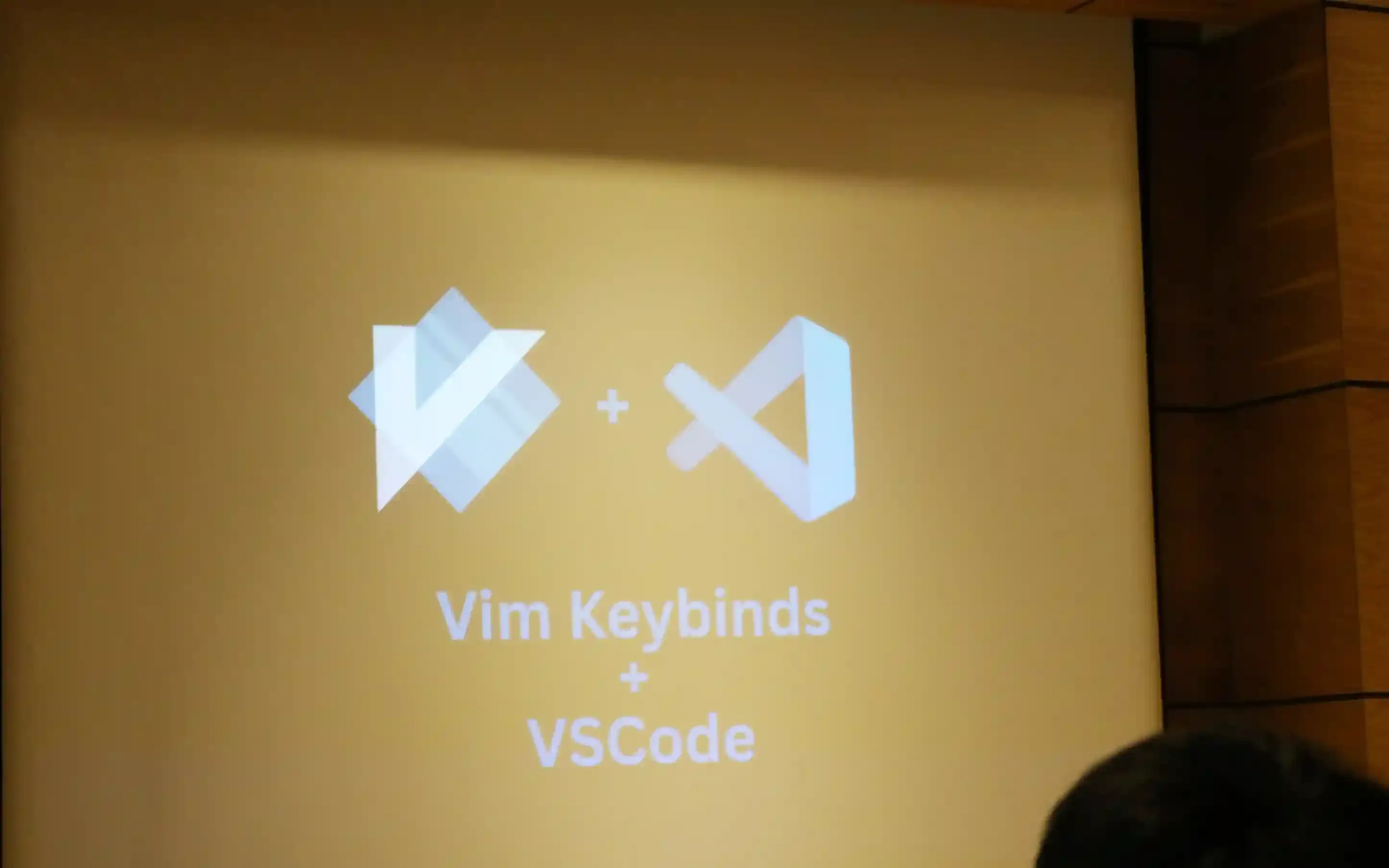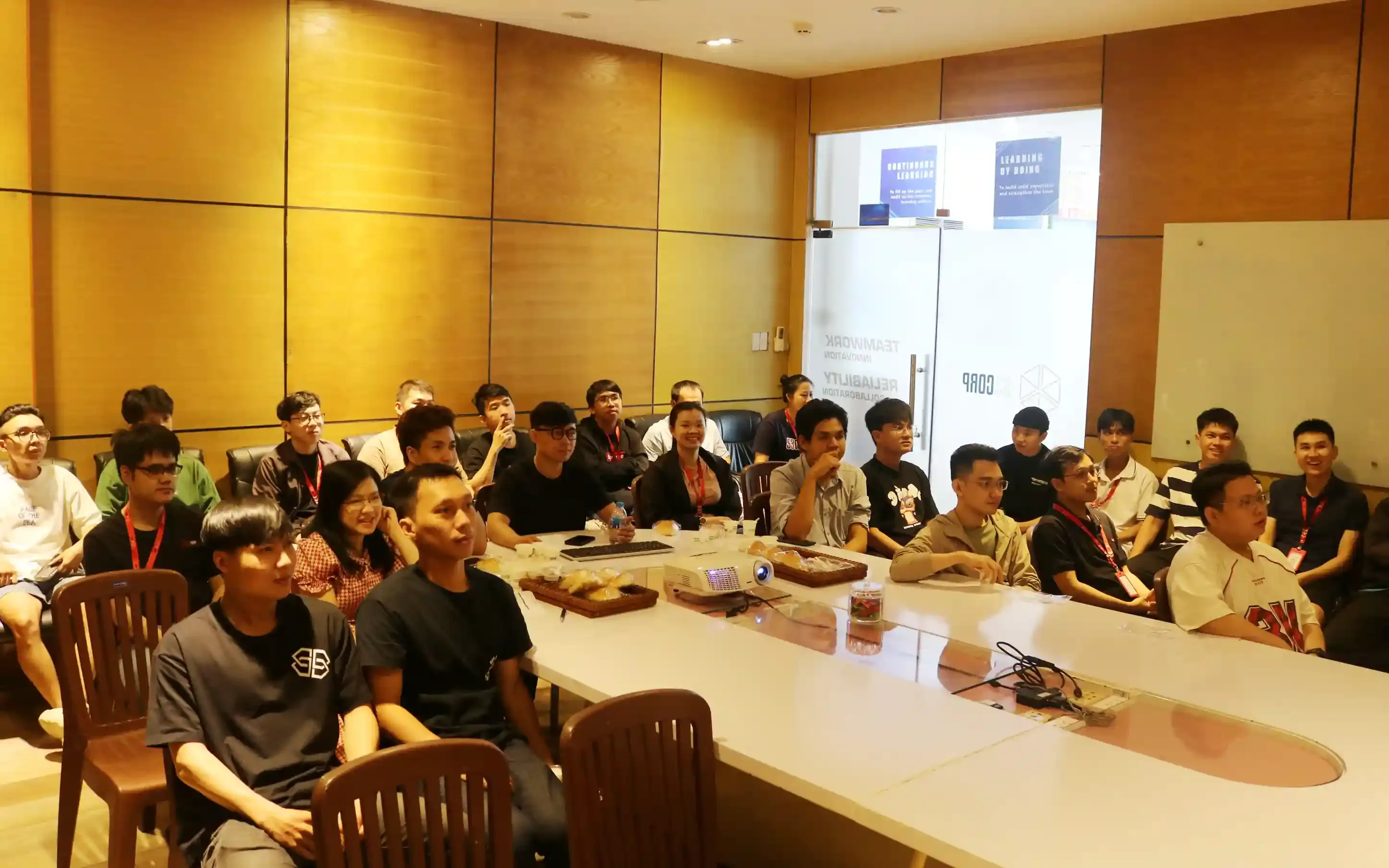
News
On Friday, June 13, 2025, S3Corp. held an internal sharing session titled "VIM Introduction with VIM Keybind in VSCode for Quick Text Editing." The session introduced the fundamentals of VIM and showed how VIM keybindings can integrate with modern tools like Visual Studio Code (VSCode) to improve development speed and accuracy. This knowledge-sharing session aligned with S3Corp.’s continuous learning culture, where engineers regularly update and expand their skill sets in practical, team-focused settings.
13 Jun 2025
On Friday, June 13, 2025, S3Corp. held an internal sharing session titled "VIM Introduction with VIM Keybind in VSCode for Quick Text Editing." The session introduced the fundamentals of VIM and showed how VIM keybindings can integrate with modern tools like Visual Studio Code (VSCode) to improve development speed and accuracy. This knowledge-sharing session aligned with S3Corp.’s continuous learning culture, where engineers regularly update and expand their skill sets in practical, team-focused settings.
 VIM Basics and Mode Structure
VIM Basics and Mode StructureThe session began with a walkthrough of VIM’s modal editing system, which separates editing actions from navigation. Attendees learned the significance of each mode: normal mode for navigation and commands, insert mode for writing, visual mode for selection, and command-line mode for running operations. This structure promotes focused interactions where each keystroke is mapped to a purpose, minimizing the need for repetitive mouse actions or multiple key combinations.
 Switching modes in VIM is fast and direct. For example, pressing i switches to insert
mode, while Esc
returns to normal mode. Understanding these transitions is key to mastering
efficient workflows in VIM or any environment where VIM keybinds are in use.
Switching modes in VIM is fast and direct. For example, pressing i switches to insert
mode, while Esc
returns to normal mode. Understanding these transitions is key to mastering
efficient workflows in VIM or any environment where VIM keybinds are in use.
The core of VIM’s design is navigating by intent, not position. In standard text editors, users often rely on arrow keys or mouse movements. VIM instead uses keys like w, b, 0, and $ to jump through words or line positions with purpose. For instance, w moves the cursor to the beginning of the next word, while b moves it back.
This approach removes the need to track cursor positions visually. Instead, users think in terms of actions—like "move to the next paragraph" (}) or "jump to a specific character" (f + character). The result is faster movement, less hand repositioning, and a stronger connection between thinking and executing.
The training emphasized how editing becomes more precise by combining motions with operators. In VIM, an operator (such as d for delete or y for yank) is paired with a motion to define a specific action. For example, dw deletes a word, and y$ yanks until the end of the line.
 This pattern makes editing intuitive and scalable. Instead of learning separate
commands for every situation, users combine a small set of operators with
motions to cover most scenarios. The logic is consistent: define what to do
(operator), then where to do it (motion). Mastery of this concept significantly
improves editing speed and reduces the chance of error.
This pattern makes editing intuitive and scalable. Instead of learning separate
commands for every situation, users combine a small set of operators with
motions to cover most scenarios. The logic is consistent: define what to do
(operator), then where to do it (motion). Mastery of this concept significantly
improves editing speed and reduces the chance of error.
The sharing also demonstrated how VIM keybinds can be used in VSCode, bringing the editing efficiency of VIM to a modern IDE. The VSCodeVim extension provides most VIM functionalities within VSCode, including modal editing, key mapping, and command repetition.
Installing the extension is straightforward from the VSCode marketplace. Once enabled, developers can use normal mode for navigation and commands, just like in native VIM. Key mappings such as gg, dd, p, and others work as expected. This setup allows developers to stay within the modern coding environment of VSCode while still benefiting from the muscle memory and precision of VIM.
The training walked through practical examples of using VIM keybinds during real code editing tasks. For example, quickly jumping to a specific function, deleting blocks of code, or repeating changes across multiple lines—all were demonstrated live. These exercises helped reinforce how VIM keybinds reduce reliance on the mouse and minimize interruptions in thought flow.
VIM supports uninterrupted workflow by reducing cognitive load. The fewer times a developer needs to switch between keyboard and mouse, or between navigation and editing tools, the easier it is to stay focused. The trainer emphasized how VIM helps users remain "in the zone," especially when handling repetitive edits or refactoring.
With modal editing, users make fewer errors caused by accidental inputs. Since actions are clearly defined by mode, there's less ambiguity in command outcomes. Combined with VSCode’s built-in features—like syntax highlighting, version control, and extensions—this setup creates a powerful development environment that supports both speed and clarity.
Another highlight was the benefit of using VIM keybinds in a full-featured IDE without giving up modern tools. VSCode supports debugging, Git integration, extensions, and collaborative tools like Live Share. By enabling VIM keybinds through an extension rather than switching to a standalone VIM setup, developers maintain access to these advantages while editing with VIM’s efficiency.
This approach supports both legacy and modern workflows. Teams working on different tech stacks or project types can apply the same editing logic without sacrificing development standards. For engineers familiar with VIM, the keybind extension lowers the barrier to entry for using modern IDE features. For those new to VIM, it’s a smooth way to begin learning while staying productive.
The "VIM Introduction with VIM Keybind in VSCode for Quick Text Editing" session held on June 13, 2025, served as a focused, practical training experience. It covered essential VIM concepts, demonstrated real use cases in VSCode, and provided a clear path for developers to integrate these tools into daily workflows.
The event showed that precision editing, smooth navigation, and modern tooling are not separate goals. With the right setup, developers at S3Corp. can work faster and stay more focused while still using the latest development platforms. This reflects the company’s approach to training: clear, applied, and always aligned with continuous learning.
Whether you have any questions, or wish to get a quote for your project, or require further information about what we can offer you, please do not hesitate to contact us.
Contact us Need a reliable software development partner?
S3Corp. offers comprehensive software development outsourcing services ranging from software development to software verification and maintenance for a wide variety of industries and technologies
Software Development Center
Headquater 307
307/12 Nguyen Van Troi, Tan Son Hoa Ward, Ho Chi Minh City, Vietnam
Office 146
3rd floor, SFC Building, 146E Nguyen Dinh Chinh, Phu Nhuan Ward, HCMC
Tien Giang (Branch)
1st floor, Zone C, Mekong Innovation Technology Park - Tan My Chanh Commune, My Phong Ward, Dong Thap Province
_1746790910898.webp?w=384&q=75)
_1746790956049.webp?w=384&q=75)
_1746790970871.webp?w=384&q=75)
